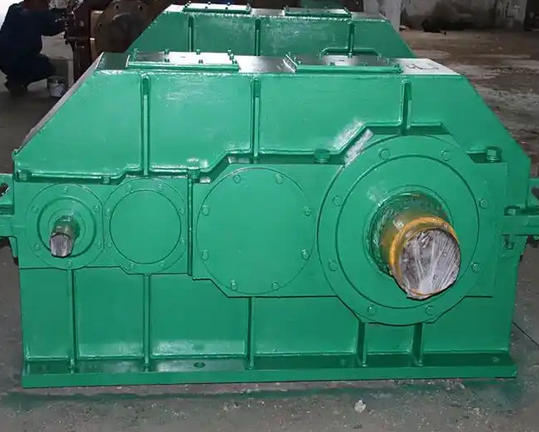What are the problems caused by the coaxiality error between the motor shaft and the input shaft of ZSY160-25-2 reducer
The coaxiality error between the motor shaft and the input shaft of ZSY160-25-2 reducer is too large, which can damage the normal transmission relationship between the two and cause a series of mechanical problems. It not only affects the efficiency and accuracy of equipment operation, but also significantly shortens the service life of key components, and even leads to equipment shutdown and failure. Specific issues can be divided into the following categories:
1、 Directly causing mechanical vibration and noise
Coaxiality error (including radial displacement, angular displacement, or a combination of both) can cause the transmission system to produce errors during operation
Periodic additional force
This force will stimulate equipment vibration:

Vibration source: Error causes the centerline of the motor shaft and the input shaft of the reducer to not coincide, and the connecting part (such as the coupling) between the two will experience alternating forces of "pulling squeezing" during rotation, forming periodic vibration.
Vibration transmission: Vibration will be transmitted through the motor and gearbox base to the entire equipment rack, causing resonance and further amplifying the vibration amplitude.
Accompanied by noise: During the vibration process, collisions and friction of components (such as uneven force friction of couplings) will produce significant noise, and as the error increases, the noise frequency and decibel value will significantly increase, deteriorating the working environment.
2、 Intensify coupling wear and failure
The coupling is the core component that connects the motor shaft and the input shaft of the reducer. Its main function is to compensate for slight coaxiality errors, but when the error exceeds the allowable range, it will become the primary damaged part:
Uneven force wear: Taking the common elastic column pin coupling as an example, excessive coaxiality error can lead to uneven force on the column pin (or elastic pad) - some column pins bear shear and compression forces far exceeding the design value, while some column pins are under insufficient force, ultimately resulting in premature wear and fracture of the column pins with concentrated force, or aging and cracking of the elastic pad.
Rigid coupling damage: If a rigid coupling (without compensation capability) is used, coaxiality error will directly transmit radial force, axial force or bending moment to the coupling body, causing the coupling bolts to loosen, break, and even the coupling flange to deform and crack.
Failure consequences: Coupling damage can cause transmission interruption or trigger more serious chain failures (such as motor idling, gearbox input shaft impact load).
3、 Causing bearing overheating and early damage
The bearings of motors and reducers (especially the input shaft bearings of reducers and the output end bearings of motors) are key components that bear radial and axial forces, and coaxiality errors can significantly increase their additional loads:
Additional radial force: Coaxiality error (especially radial displacement) can cause "bias load" between the inner and outer rings of the bearing and the rolling elements - the contact area between the rolling elements and the raceway is uneven, resulting in a sharp increase in local contact stress (far exceeding the design rated load).

